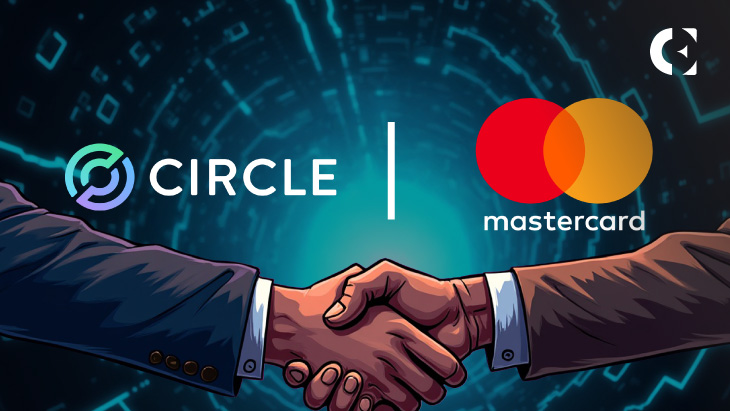- Mastercard and Circle are expanding their partnership to offer USDC and EURC settlement in new regions
- The move allows merchants in Africa and the Middle East to get faster, cheaper payment settlements
- Arab Financial Services (AFS) and Eazy Financial Services are the first to use the new feature
Mastercard is deepening its partnership with Circle to bring stablecoin settlement to acquirers in Eastern Europe, the Middle East, and Africa (EEMEA). For the first time, businesses in these regions can settle transactions using Circle’s USDC and EURC. This move shows Mastercard’s commitment to integrating blockchain assets with traditional finance and giving merchants more efficient settlement options.
How Do Stablecoins Improve Payments?
Using stablecoins for settlement gives acquirers and merchants several key advantages. Besides reducing reliance on old-school banking rails, stablecoins improve liquidity, speed up payment cycles, and lower operational costs.
This move directly solves key challenges around delayed settlements and cross-border payments. The combination of Mastercard’s huge global network and Circle’s trusted digital dollar and euro makes the initiative a major step forward for emerging markets. As Kash Razzaghi, Chief Business Officer at Circle, noted, wider adoption will bring “global access, scale, and borderless trade opportunities.”
Who Are the First Companies to Use This System?
Arab Financial Services (AFS) and Eazy Financial Services are the first acquirers in the EEMEA region to use the new stablecoin capability.
Samer Soliman, CEO of AFS, said the service offers “much-needed efficiency” for high-volume settlements. Nayef Al Alawi, CEO of Eazy Financial Services, highlighted that the initiative helps them deliver “faster and more secure payment solutions” that meet the evolving needs of merchants.
Mastercard’s Broader Stablecoin Strategy
This partnership with Circle is a key part of Mastercard’s larger strategy to stay at the forefront of payment innovation. The company is actively exploring other stablecoin use cases, including remittances, B2B payments, and payouts for gig workers and creators. This is a clear signal that half of Mastercard’s EU e-commerce is now tokenized and they are pushing for more.
The move also comes as giants like Amazon and Walmart explore stablecoins to bypass Visa and Mastercard fees showing the competitive pressure to innovate.
Disclaimer: The information presented in this article is for informational and educational purposes only. The article does not constitute financial advice or advice of any kind. Coin Edition is not responsible for any losses incurred as a result of the utilization of content, products, or services mentioned. Readers are advised to exercise caution before taking any action related to the company.







